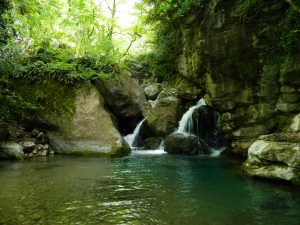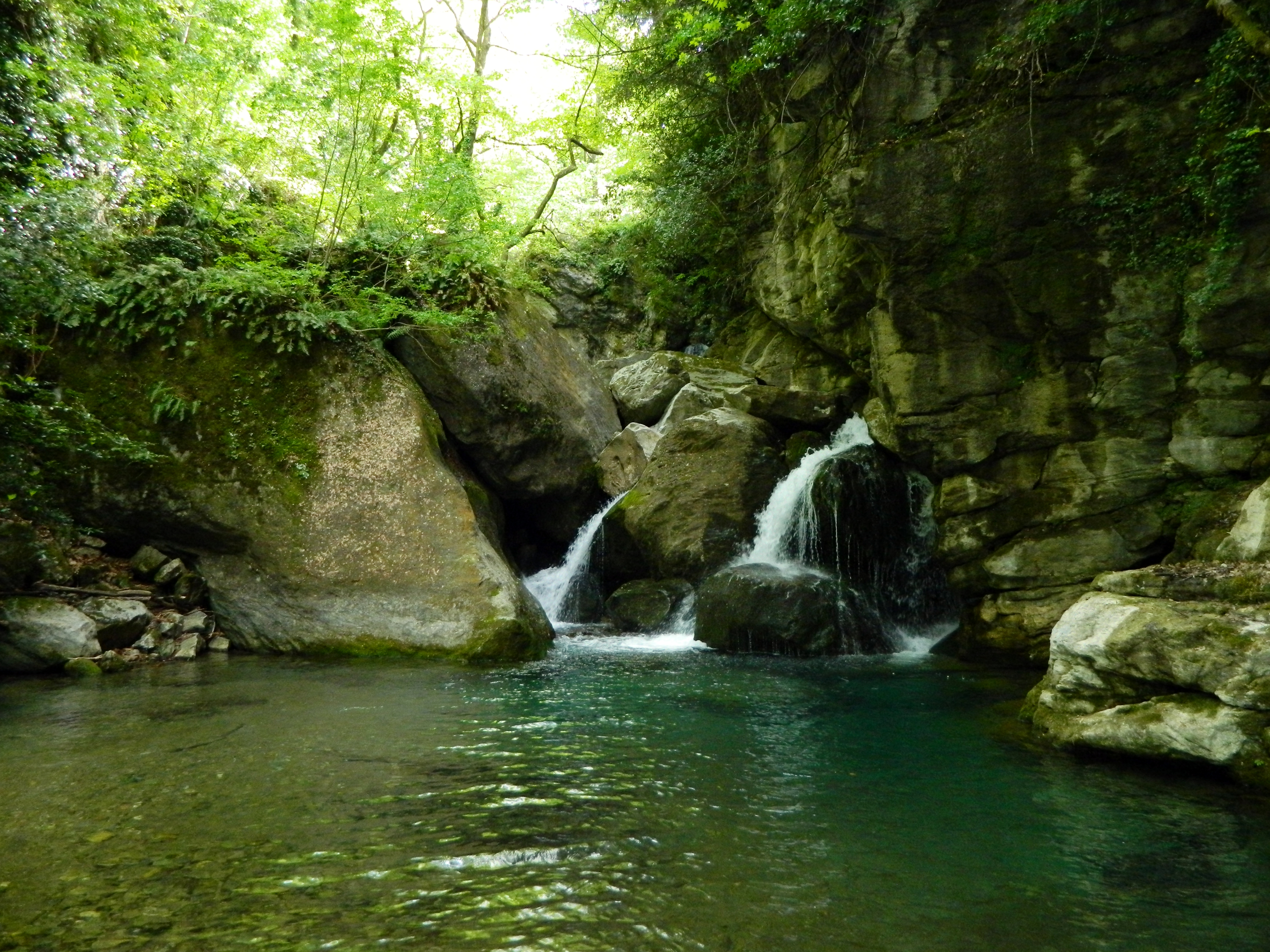
(https://commons.wikimedia.org/wiki/File:Small_waterfalls_in_Pelion.jpg) CC-by-sa-4.0 (https://creativecommons.org/licenses/by-sa/4.0/)
By simulating a river in a lab, scientists have learned that sometimes waterfalls can be created spontaneously.
Previously, geologists believed that outside factors were required for the formation of a waterfall. Events like an earthquake might cause a shift in the terrain, creating a waterfall where there previously wasn’t one. Slower events, like erosion and sea-level change, could also cause waterfalls. In the lab, however, the man-made river’s turbulence was enough to create a waterfall without any outside factors.
By using polyurethane foam, scientists can simulate the effects that water has on different types of rock, but at a much quicker pace than occurs in nature. And this test process showed the scientists how water and sediment could create a waterfall even without any other events. As the sediment built up in certain portions of the man-made stream, it created a sort of “lip” that then caused a waterfall to form.
You can read more about this study, and its applications in the field, here.
Follow us online: